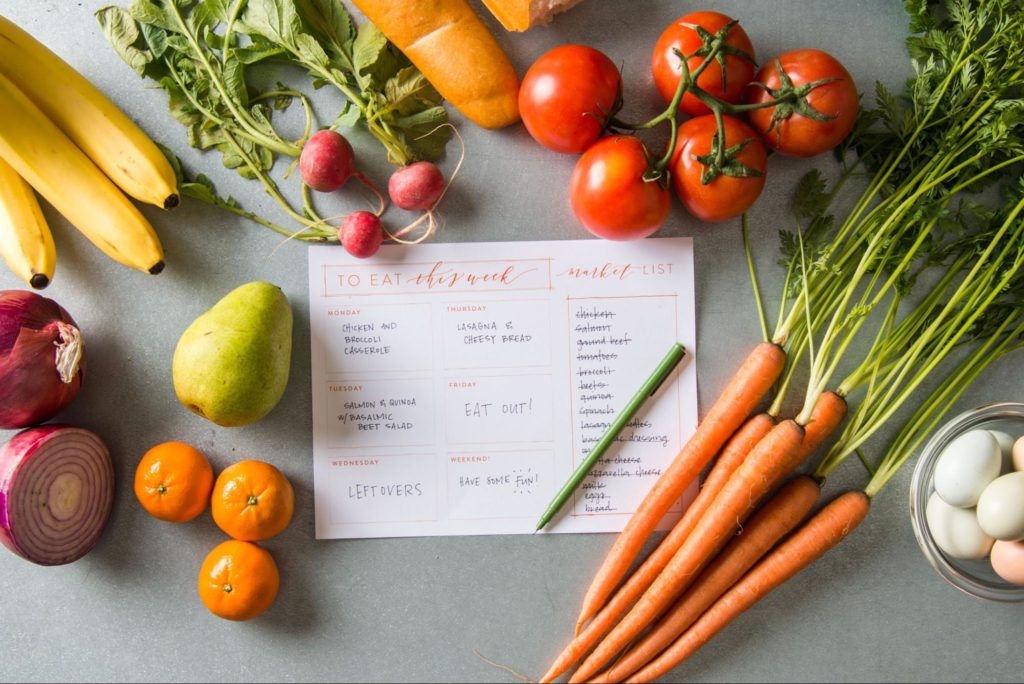
Meal planning is an essential piece to maintaining a healthy diet!
If you don’t think you have time to meal plan, then you are the person who needs it the most. Meal Planning not only saves you time during the week, it lowers your stress, saves you money, and allows you to easily stick to your healthy eating goals.
Without consistent meal planning, eating healthy is truly an uphill battle. Let’s be real though. Meal planning does take some time. However when you find a system that works and you schedule it into your routine each week you’ll be surprised to see just how easy it can be.
That’s exactly what I do each and every week and have done for the last 15+ years. I’ve evolved my system over the years and have found it to be the most important thing I do every week to keep me and my family eating healthy. Today I want to share some of my strategies with you.
Keep It Simple
Above everything else, keep it simple. Seriously! This is the mantra you should live by.
As soon as you start to get fancy or make it complicated, you’ll slowly start slipping off the wagon. Keeping it “simple” is going to look different for everyone. It really depends on you and your definition of simple.
For me, this means rotating through favorite meals and scheduling in planned leftovers. Having just enough to keep it interesting but not where I have to re-invent the wheel every week. I also like to use theme inspired days, again to lessen the amount of creativity I have to lean on each week. You can create any theme you like but here are some that I’ve done in the past:
- Meatless Mondays – dedicated to vegetarian meals
- Taco Tuesdays – anything Latin inspired (tacos, fajitas, etc)
- Leftover Wednesdays
- Poultry Thursdays
- Fish Fridays – this way I made sure we had fish at least once a week OR Pizza Fridays – where we made different homemade pizzas each week
- Burger Saturdays – we rotate through hamburgers, turkey burgers, mushroom burgers, etc –> for awhile I also did a take on this with Grilled Saturdays, which just meant we did something on the BBQ
- Soup/Stew Sundays
First Five
This is the place I always encourage people to start. Even if you don’t consider yourself a “cook” I’m sure you have at least a few meal ideas or recipes that you go to over and over. You may be starting to get sick of those but the point is to start with what you know, with what’s easy, and then build from there.
Start with 5 basic dinners. Dedicate one per night, with one night for leftovers, and one night to go out. Voila! Your first week of meal planning is done.
As you know, I’m always stressing the importance of variety. So assuming you’re an omnivore then make it a goal to eventually get at least one yummy recipe for each of the following to round out the variety of your “First Five”.
- 1 Poultry (chicken or turkey) Dinner
- 1 Vegetarian (with beans or soy) Dinner
- 1 Meat (beef, lamb, bison, pork, etc) Dinner
- 1 Fish Dinner
- 1 Vegetarian (with eggs) Dinner
Be Inspired
Although it’s important to keep it simple, which generally means starting with what you know, you will eventually get bored of the same 5 dinners.
So, the remedy?! Cooking inspiration!
You are going to need to try out some new recipes. The winners will get into the rotation to start adding more and more variety to your dinners.
There are many places you can find cooking inspiration. Of course through The Rustic Dietitian website, newsletter, and social media pages. I’m always on the search for delicious recipes and when I find them I share them with you.
There are also many, many, many cooking and recipe websites out there; here are some of my favorites:
And of course, good old-fashioned cookbooks. I still love flipping through a cookbook and finding inspiration from the beautifully photographed food. Dust off those cookbooks (I know you have some) and start flipping the pages; earmark the recipes that seem worth trying. Commit to trying at least one or two new recipes every month.
Schedule It In
The final piece to your meal planning strategy is scheduling it in. If you don’t make time every week to write out your plan, organize your grocery list, and get to the store then all your good intentions will be for not. This is one of the primary ways I use my Time Map. Within my weekly routine I have a set day and time that I dedicate to meal planning and shopping; that way it never gets overlooked and I always have the time to do it.
Take Home Message
There are many tools out there to help you with meal planning (software programs, membership sites, food delivery companies, etc). The bottom line though is you need to adopt what’s going to work for you and your family. I find that for most people using other people’s meal plans or ideas is not sustainable for the long-term. It can certainly be helpful in kick-starting your healthy eating habits and garnering inspiration but ultimately you need to find a system that’s going to keep you meal planning forever with foods and meals that you and your family love.
